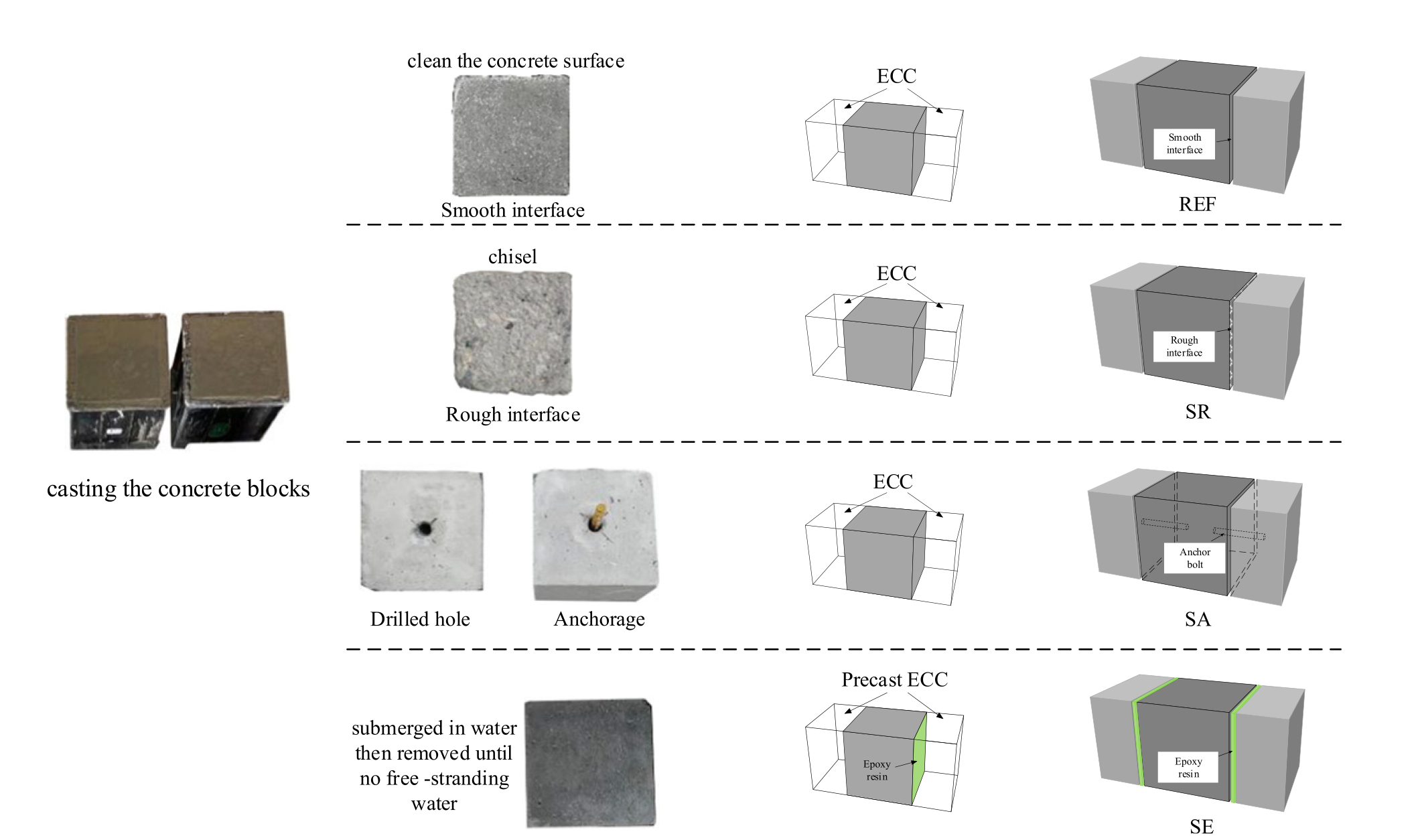侯炜
![]()
开通时间:..
最后更新时间:..
点击次数:

关键字:engineered cementitious composites; concrete repair; bond strength; surface treatment; bonding mechanism
摘要:This study aims to investigate the influence of different surface treatments, including smooth interface, rough interface, anchor bolt connection, and epoxy bonding agent, on the shear resistance of Engineered Cementitious Composites (ECC)-concrete interface through bi-surface shear testing. The experimental results show that the interfacial shear strength between ECC and concrete is significantly enhanced by the implementation of the three interface treatment methods, as opposed to the smooth interface. Among these methods, the anchor bolt connection exhibits the greatest improvement in interfacial bonding performance. Notably, cohesive failure is observed in the anchor bolt connection method, while the other three methods result in adhesive failure, with only the anchor bolt connection method displaying ductile failure behavior. Following a comprehensive review of relevant studies and the outcomes of this experiment, three distinct interface bonding mechanisms were identified and the forces contributing to the bond were analyzed. Results indicated that the interfacial bond strength is notably influenced by the surface roughness. These research findings substantiate the viability of utilizing the anchor bolt connection method, particularly in applications where ductility requirements in the repair layer are essential for structural integrity.
论文类型:期刊论文
是否译文:否
收录刊物:SCI
DOI码:10.1177/13694332241252275
上一条:张巧,张艺欣,陈茜,等.碳酸钙类石粉在混凝土材料中的再利用研究综述[J/OL].材料导报,1-23. http://kns.cnki.net/kcms/detail/50.1078.tb.20240710.0908.002.html
下一条:Wei Hou, Qiao Zhang, Zhibin Zhuang, and Yixin Zhang*. Sustainable Reusing Marble Powder and Granite Powder in Cement-Based Materials: A Review. ACS Sustainable Chemistry & Engineering (JCR Q1, TOP, 封面论文), 2024, 12, 2484−2510